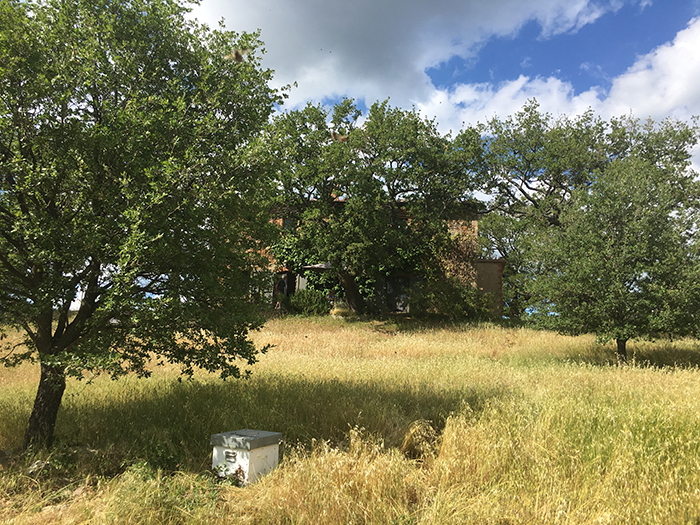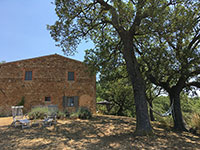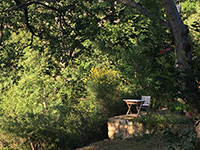A swarm of bees at Casa Vacanze Podere Santa Pia | Artificial swarming |
Artificial swarming When a colony accidentally loses its queen, it is said to be "queenless". The workers realize that the queen is absent after as little as an hour, as her pheromones fade in the hive. The colony cannot survive without a fertile queen laying eggs to renew the population, so the workers select cells containing eggs aged less than three days and enlarge these cells dramatically to form "emergency queen cells". These appear similar to large peanut-like structures about an inch long that hang from the center or side of the brood combs. The developing larva in a queen cell is fed differently from an ordinary worker-bee; in addition to the normal honey and pollen, she receives a great deal of royal jelly, a special food secreted by young "nurse bees" from the hypopharyngeal gland. This special food dramatically alters the growth and development of the larva so that, after metamorphosis and pupation, it emerges from the cell as a queen bee. The queen is the only bee in a colony which has fully developed ovaries, and she secretes a pheromone which suppresses the normal development of ovaries in all her workers. Beekeepers use the ability of the bees to produce new queens to increase their colonies in a procedure called splitting a colony. To do this, they remove several brood combs from a healthy hive, taking care to leave the old queen behind. These combs must contain eggs or larvae less than three days old and be covered by young nurse bees, which care for the brood and keep it warm. These brood combs and attendant nurse bees are then placed into a small "nucleus hive" with other combs containing honey and pollen. As soon as the nurse bees find themselves in this new hive and realize they have no queen, they set about constructing emergency queen cells using the eggs or larvae they have in the combs with them.
|
 |
||||
Bee collecting pollen
|
A swarm attached to a branch
|
How to capture a swarm | ||
 |
||||
The first hive at Podere Santa Pia
|
||||
 |
 |
 |
||
Queen bee (center)
|
Worker bee | Larger drones compared to smaller workers
|
||
|
||||
Podere Santa Pia |
Colline sotto Podere Santa Pia |
|||
 |
 |
 |
||
|
||||
Mappa Podere Santa Pia | Ingrandire mappa
|
||||
|
||||
| Questo articolo è basato sull' articolo Beekeeping dell' enciclopedia Wikipedia ed è rilasciato sotto i termini della GNU Free Documentation License. | ||||



